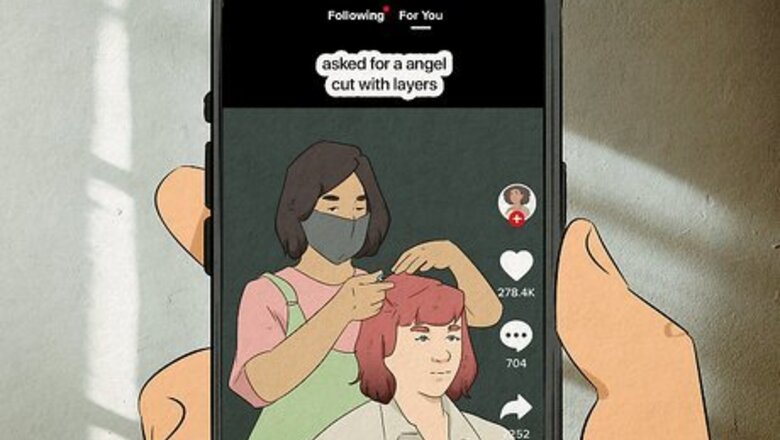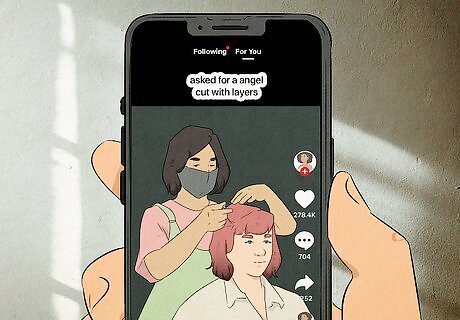
views
What does an “Angel Cut with Layers” mean?

An “angel cut with layers” means a client needs help with domestic abuse and is at the salon against their will. An “angel cut with layers” is a code for hairdressers that means that the client is being forced to get their hair cut without their consent and may be suffering from abuse from a partner or family member. When someone uses this code, it signals the hair stylist to refuse service to them and ask the client if they’re safe. This code was created to help women who need help with domestic abuse or violence without raising the suspicion of their abuser. It also helps clients who come in for a “punishment cut,” or haircuts they’re forced to get because they disobeyed their parents or their partner, for example.
“Angel Cut” vs. “Angel Cut with Layers”
An “angel cut” (no layers) means the client is in immediate danger and to call for help. While an “angel cut with layers” signals to a stylist that the client isn’t there willingly and to stop service, an “angel cut” signals that the client needs urgent help immediately. They may be a victim of human trafficking, domestic violence, or another situation that requires fast intervention from law enforcement or a support agency. Both phrases are ways for clients to ask their stylist for help discreetly, with an “angel cut” signifying the most urgent need for help.
Where did the “Angel Cut with Layers” come from?

The “angel cut” was invented by TikTok creator and hairstylist Leda Fazal. TikTok creator @ledafazal created the “angel cut” code for hairdressers after hearing about the “angel shot” code used in bars and restaurants to help patrons who feel unsafe on dates. She has created many TikToks demonstrating what an “angel cut” means and how to respond as a stylist. The “angel cut” (without layers) was created for clients to quietly let their hairdressers know that they’re a victim of domestic violence or human trafficking and need immediate help. The “angel cut with layers” was also inspired by Leda’s experiences of domestic abuse; her father once forced her to get short bangs as punishment.
How to Help Clients in Need
Remain calm to avoid raising suspicion from the possible abuser. Check the client in and carry on with small talk as you normally would if the client requests an “angel cut” or “angel cut with layers.” Look around for overbearing parents or partners who may be forcing the client to get their hair cut against their will and try to communicate with the client discreetly. The client may request the cut once they’re in the chair or as soon as they get to the check-in desk.

Refuse to cut the client’s hair and ask them discreetly if they feel safe. When a client asks for an “angel cut with layers,” stop the service immediately and ask them if they’re feeling safe or if they really want the haircut. If they say they’re okay, there’s no need for the police to be called in. To avoid suspicion, consider inventing an excuse that prevents you from completing the cut. For example, you could fake a phone call about an emergency situation. This is especially helpful if the client’s parent or partner is nearby and watching.
Call 911 if the client asks for an “angel cut” (or have a coworker do it). If a client tells you they’re in danger or asks for an “angel cut” (without layers), contact the police immediately and inconspicuously (for example, from a back room or staff lounge). If the client’s parent or partner is watching, make up an excuse to leave for a second and quietly ask a coworker to contact the authorities while you tend to the client.
Helpful Resources for Stylists

Call these emergency services or a national hotline for guidance. Call your country’s emergency services (like 911) right away if the client is in immediate danger. If you suspect that someone is a victim of human trafficking or domestic violence, call one of the hotlines below. National Domestic Violence Hotline: Call 1-800-799-7233 or text “START” to 88788. National Human Trafficking Hotline: Call 1-888-373-7888 or text 233733.




















Comments
0 comment